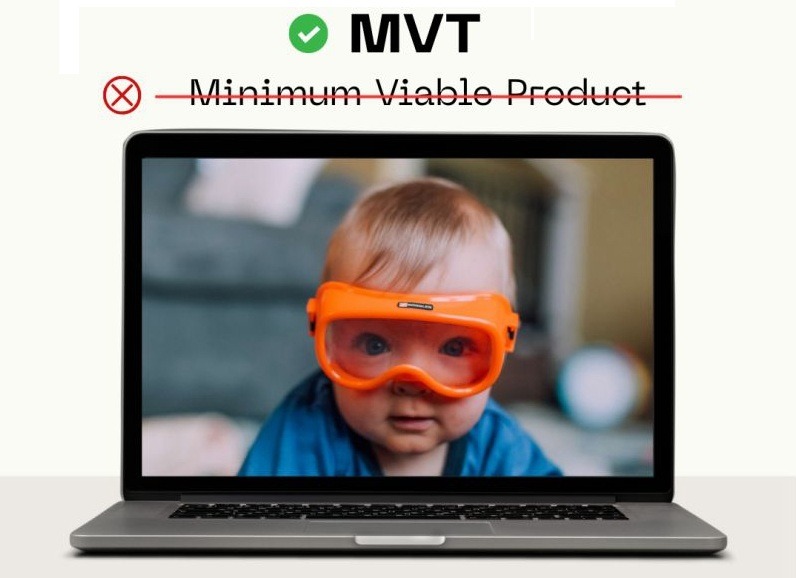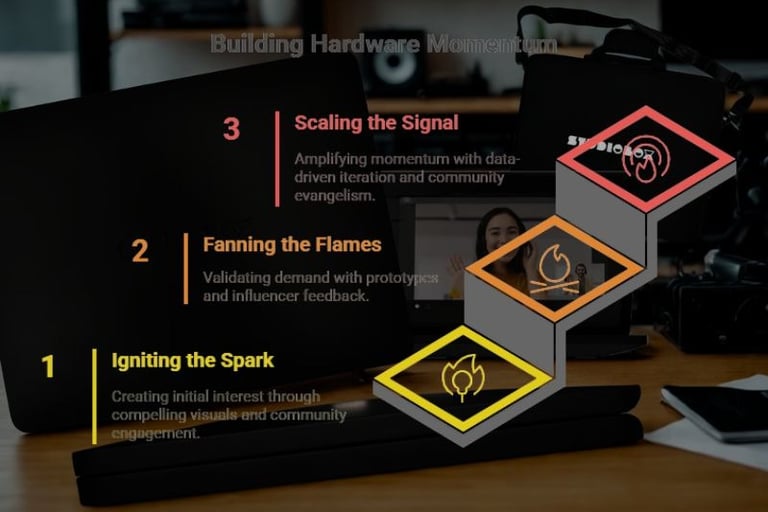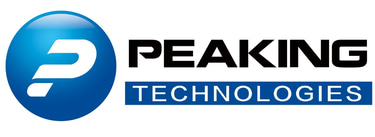Beyond the Blueprint: Why 2025 Demands Minimum Viable Traction for Hardware Startups
Here we are in 2025, and something fundamental has shifted. The ground beneath our feet feels less like a solid foundation and more like a shifting sand dune. The very notion of "viable" just… isn't enough anymore.
5/26/20258 min read


Remember the good old days? The quiet hum of a new prototype, the thrill of getting a perfect schematic signed off, the long nights spent debugging, all leading to that glorious moment when you finally held a polished, manufacturable product in your hands. That, my friends, was the MVP dream in hardware. Minimum Viable Product. Get it "viable," then launch, then hope for the best.
But here we are in 2025, and something fundamental has shifted. The ground beneath our feet feels less like a solid foundation and more like a shifting sand dune. The very notion of "viable" just… isn't enough anymore. It’s not about whether your fancy new gadget works. It’s about whether it wins attention.
This isn't just a nuance; it’s a seismic shift. And for us hardware founders, it means a complete rewrite of our launch playbook. Forget MVP. Today, the only acronym that truly matters is MVT – Minimum Viable Traction.
The Ghost of MVPs Past: Why Hardware is Different (and Harder)
Let’s be honest. For a long time, the MVP concept felt like a cruel joke for hardware. Software startups could cobble together a functional app in a weekend, push it live, and iterate based on user feedback. Their "minimum" was genuinely lean.
For us, "minimum" still meant:
Tooling: Millions of dollars for injection molds, often before you knew if anyone truly cared.
Manufacturing: Finding reliable partners, negotiating MOQs that felt like buying out a small country’s annual output.
Certification: CE, FCC, UL, RoHS… a laundry list of acronyms that translated to months of testing and piles of cash, just to make sure your product wouldn't spontaneously combust or jam up someone’s Wi-Fi.
Inventory: Stacks of shiny, unloved boxes sitting in a warehouse, bleeding cash.
The hardware MVP was a Frankenstein’s monster – a creature of immense upfront investment, slow iteration cycles, and a terrifyingly high cost of failure. We’d spend years perfecting the interface, the enclosure, the embedded software, only to unleash it upon a world that had already moved on, or worse, just didn’t care. We were building grand cathedrals in the desert, hoping someone would eventually discover them.
This wasn't about "half-baked." It was about over-baking in a pressurized oven of fixed costs and long lead times. We aimed for perfection before launch, because the cost of fixing things after launch was astronomical. The idea of "shipping early and often" was a luxury we simply couldn't afford.
Welcome to MVT: Your New North Star
So, what does MVT mean for us, the intrepid explorers of physical products? It means that your initial focus shifts from delivery capability to demand signal. It's not about proving you can build it; it's about proving people want it – desperately enough to actually commit their attention, their data, and eventually, their money.
Think of it this way: In a world drowning in AI-generated content, where everyone can spin up a perfect-looking website or generate dazzling product renders with a few prompts, the sheer volume of digital noise is deafening. A perfectly engineered product that nobody knows about is just… another perfectly engineered product.
What cuts through that noise? Not features. Not specs. Not even necessarily a finished product. What cuts through is traction. A small, yet vocal, wave of users shouting about what you're building. That, my friends, is the new gold standard. That’s what’s fundable. That’s what’s shareable. That’s what’s scalable.
The MVT Playbook for Hardware: From Blueprint to Buzz
This isn’t about sacrificing quality or cutting corners. It’s about a radical reordering of your priorities, especially in those crucial early stages.
Phase 1: Igniting the Spark (Before You've Even Placed a Component Order)
This is where the MVT magic truly begins for hardware. You don't need a factory run. You need a compelling whisper that grows into a roar.
Your Landing Page IS the Pitch (with a Heavy Dose of Vision):
Visualize the Unbuilt: This is your canvas. Leverage photorealistic renders, short animated videos, and immersive experiences that make your concept feel tangible, even if it’s still on the drawing board. Don't just show the product; show the transformation it offers. How will it make someone's life easier, better, more fun? If you're building a smart home device, show a family effortlessly enjoying their connected life, not just the device itself.
Focus on the Problem, Not Just the Product: People buy solutions, not features. Articulate the pain point your product solves with absolute clarity and empathy. "Tired of forgetting your keys?" "Struggling to track your pet?" Make it relatable.
The Irresistible Call to Action: Your primary goal here is to capture interest. A prominent, crystal-clear call to action: "Join the Waitlist," "Get Early Access," "Be Notified When We Launch." Make it frictionless.
A/B Test Your Heart Out: Don't guess what resonates. Test different headlines, hero images, value propositions, and even perceived pricing tiers. See what language makes people hit that "sign up" button. This is your earliest, cheapest market research.
Your Waitlist IS the Validation (and Your Future Army):
Beyond Just Email Addresses: Your waitlist isn't just a list; it's a community in embryo. Segment it. Ask simple, optional questions: "What feature are you most excited about?" "What problem does this solve for you?" This provides invaluable qualitative data.
Build a Community Around It: Don't just collect emails and go silent. Send regular, engaging updates. Share behind-the-scenes glimpses of your design process (even if it’s just CAD models). Host Q&A sessions. Create a private Discord or Slack channel for your earliest, most passionate sign-ups. Let them feel like insiders.
Leverage Social Proof: As your waitlist grows, show it off. "Join X,000 others who are excited about [Your Product Name]!" Showcase testimonials from early enthusiasts who have engaged with your concept. Numbers speak volumes.
Your DMs ARE the Investor Pipeline (Especially for Hardware):
Direct Engagement is King: In a world of automated outreach, a genuine, personal DM stands out. Don't spam, but actively seek out and engage with potential customers, early influencers, tech journalists, and most importantly, early-stage VCs who understand hardware.
Share Qualitative Insights, Not Just Numbers: VCs don't just want a big waitlist number. They want to hear the story behind it. "We saw a 30% increase in sign-ups after we highlighted X feature, and feedback from our early community suggests Y is a critical pain point." This shows you're not just building; you're listening and learning.
The "Personal Touch": Hardware is tangible, and human connection still matters. Use your DMs to build rapport, answer questions, and demonstrate your passion. It’s about building relationships, not just pitching.
Phase 2: Fanning the Flames (With Early Prototypes, Even Rough Ones)
Once you've built that initial spark of interest, it's time to give them something a little more substantial to latch onto.
Pre-orders & Crowdfunding as MVT Goldmines:
More Than Just Fundraising: For hardware, crowdfunding platforms like Kickstarter or Indiegogo aren't just about securing capital; they're about validating demand with actual money. It's the ultimate MVT test. If people are willing to put down cash for a product that doesn't yet exist, you have traction.
Radical Transparency: Be brutally honest about your development timeline, manufacturing challenges, and potential delays. Under-promise and over-deliver. This builds trust, which is paramount in hardware crowdfunding.
Empower the Early Backers: Your backers become your first army of evangelists. They will literally "shout about it" on social media. Engage them, involve them in decisions (e.g., voting on color options), and celebrate their contributions.
Market Testing Ground: Use different reward tiers to test pricing sensitivity and feature bundles. See what resonates most.
Influencer & Early Adopter Engagement:
Functional (Even If Not Pretty) Prototypes: Once you have a working prototype, get it into the hands of key tech reviewers, niche community leaders, and genuine early adopters. It doesn't need to be mass-production ready, but it must function reliably for its core purpose.
Solicit Honest, Public Feedback: Don't just send it to your friends. Seek out people who will give you brutally honest assessments, and be prepared for public criticism. Their authentic reviews (good and bad) build credibility.
The Ripple Effect: One positive review from a respected influencer can generate more MVT than months of advertising. Focus on organic endorsements.
Niche Communities are Gold: For hardware, think beyond the big tech YouTubers. Are there specific maker communities, hobbyist forums, or specialized online groups that would genuinely appreciate your product? That's where you'll find your most passionate early adopters.
"Ship the Insight, Not Just the Interface" in Hardware:
The "Aha!" Moment: For your early prototypes, focus relentlessly on the core insight, the single problem your product solves, and ensure that "aha!" moment is delivered flawlessly. If your smart lock makes entry truly effortless, make sure that experience is perfect, even if the companion app is basic.
Resist Feature Creep: This is a killer for hardware. Don't add features just because you can. Only add features that are directly supported by your MVT data – things your early adopters are explicitly asking for or demonstrating a clear need for. Every extra component, every line of code, adds complexity, cost, and delays.
Phase 3: Scaling the Signal (From Buzz to Boom)
You’ve got the initial spark, fanned the flames, and now it’s time to amplify that momentum.
Data-Driven Iteration: Your MVT data – waitlist conversion rates, pre-order trends, community feedback, influencer engagement – is your new product roadmap. It tells you what features to prioritize for your first production run, what pricing works, and what messaging resonates.
The Reaction IS the Story: Stop talking about your product's features. Start showcasing the reaction to your product. User-generated content, unboxing videos, testimonials, media mentions, social media shares – this is your marketing. Turn your early adopters into your loudest evangelists.
From Dashboard to Dialogue: VCs no longer just want a polished deck and a perfect spec sheet. They want to see a live dashboard demonstrating that people are actively seeking out, engaging with, and committing to your product. They want to see a clear path to market adoption, driven by organic momentum. Customers want to see a product gaining traction, not just promising features. Communities don't follow products; they follow momentum, buzz, and a shared sense of excitement.


Overcoming Hardware-Specific Hurdles with MVT
Embracing MVT isn't just about launching faster; it's about mitigating the unique risks of hardware:
Risk Mitigation: By validating demand early, you drastically reduce the risk of investing millions in tooling and manufacturing for a product nobody wants.
Stronger Negotiating Power: When you approach manufacturers with proven MVT – a substantial waitlist, successful pre-order campaign, or strong crowdfunding numbers – you have leverage. You're not a hopeful startup; you're a proven demand generator.
Supply Chain Confidence: Validated demand translates to more predictable inventory needs, allowing you to build stronger relationships with suppliers and avoid costly overstocking or understocking.
Targeted Certification: Instead of blindly getting every certification, your MVT data might tell you which markets are most interested, allowing you to prioritize the necessary certifications, saving time and money.
The Fast Lane to Winning in 2025
The world has changed. The digital landscape is noisy, and attention is the ultimate currency. For hardware startups, the old playbook of "build it and they will come" is a dangerous fantasy.
In 2025, the fastest way to win isn't by perfecting every screw and circuit before launch. It’s by building something people care about today – generating that initial spark, fanning those early flames, and then tirelessly scaling the signal.
Stop over-polishing. Stop chasing theoretical perfection. Ship the insight, not just the interface. Make something real – even if it's just a compelling vision and a working prototype – and see if anyone runs toward it. Because in this new era, the reaction to your product is the only story that truly matters. And that story starts with traction.
